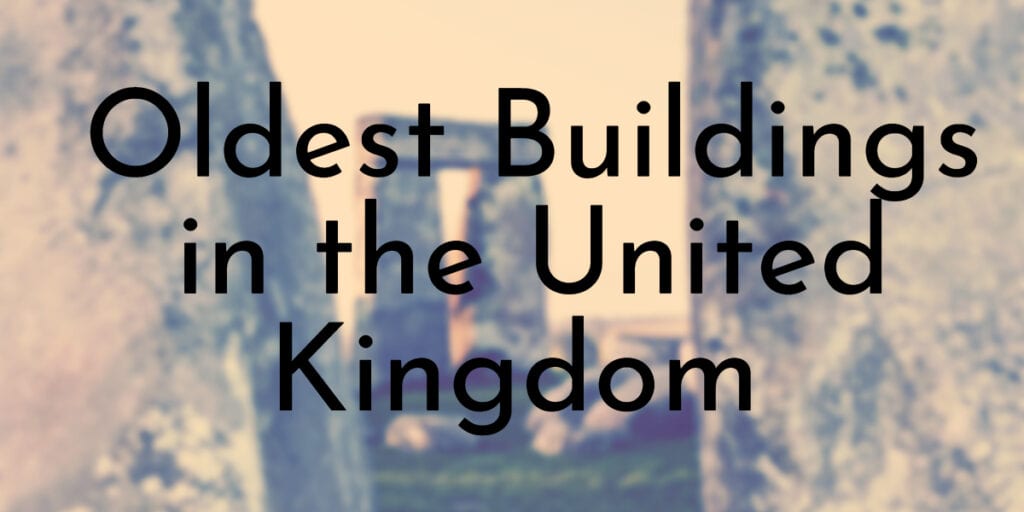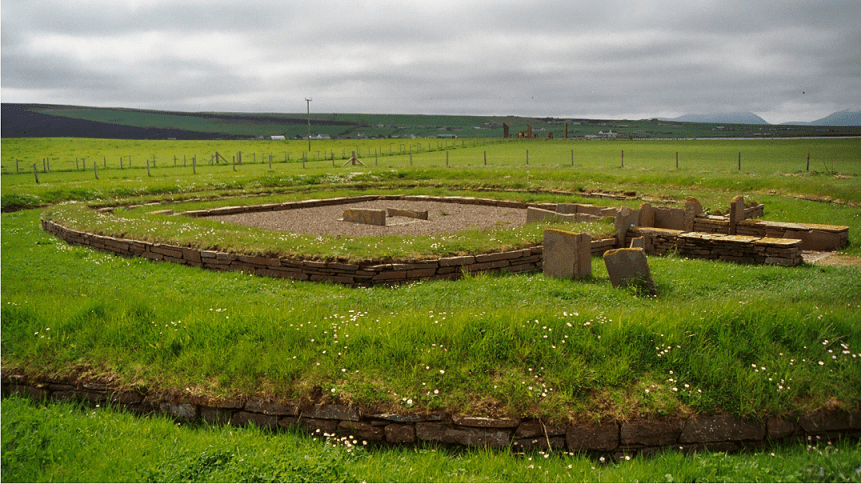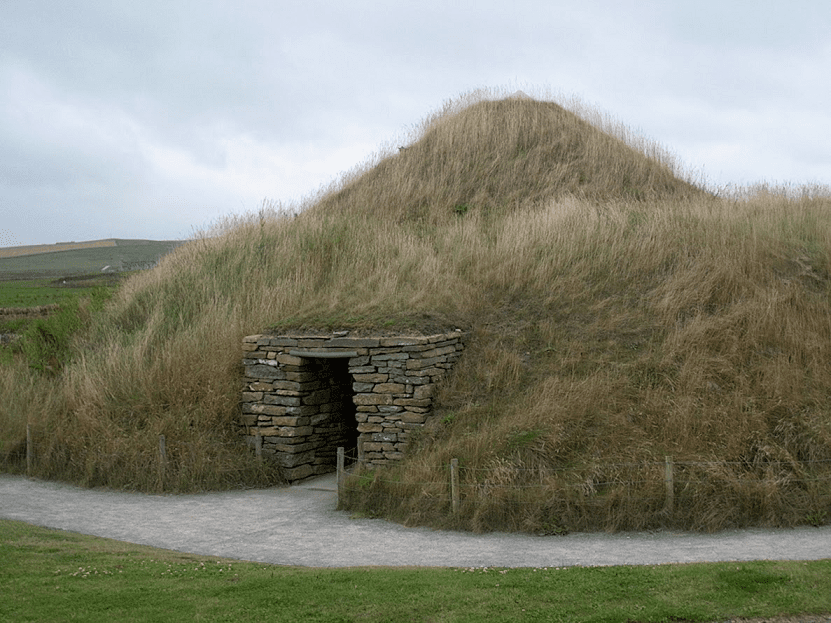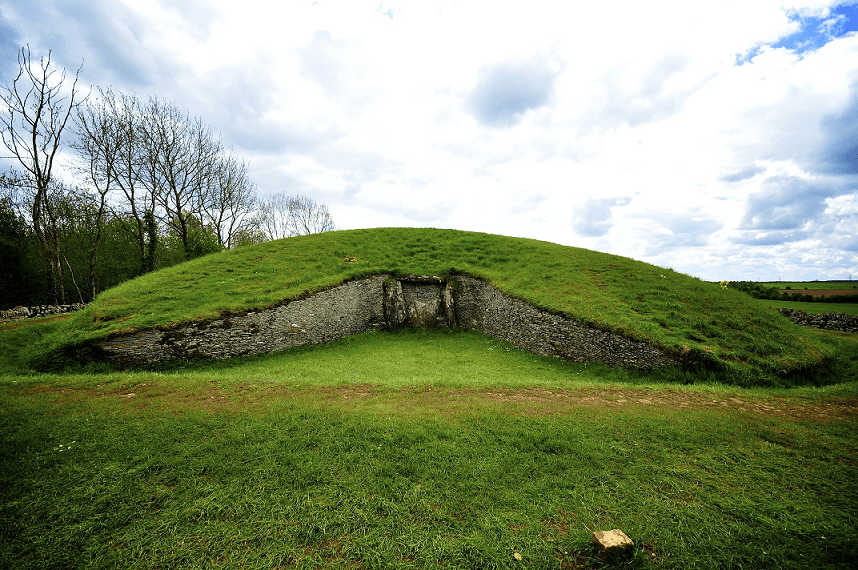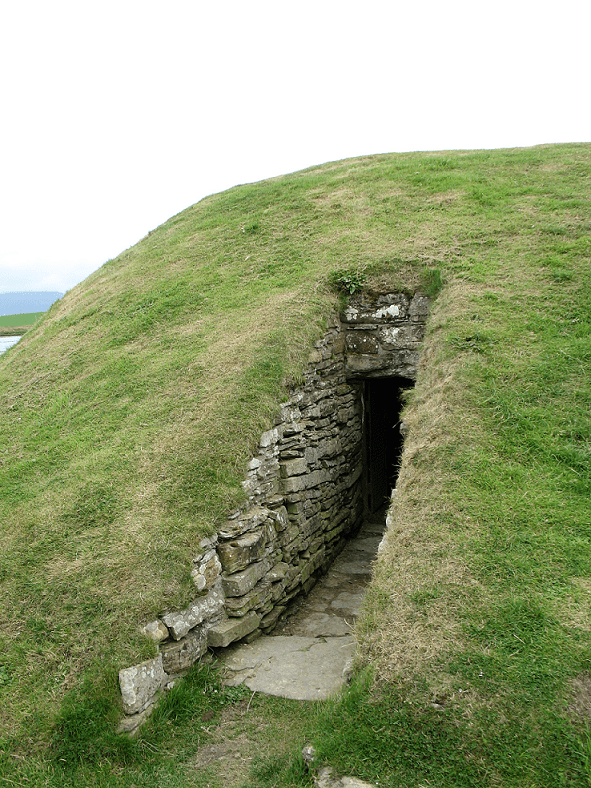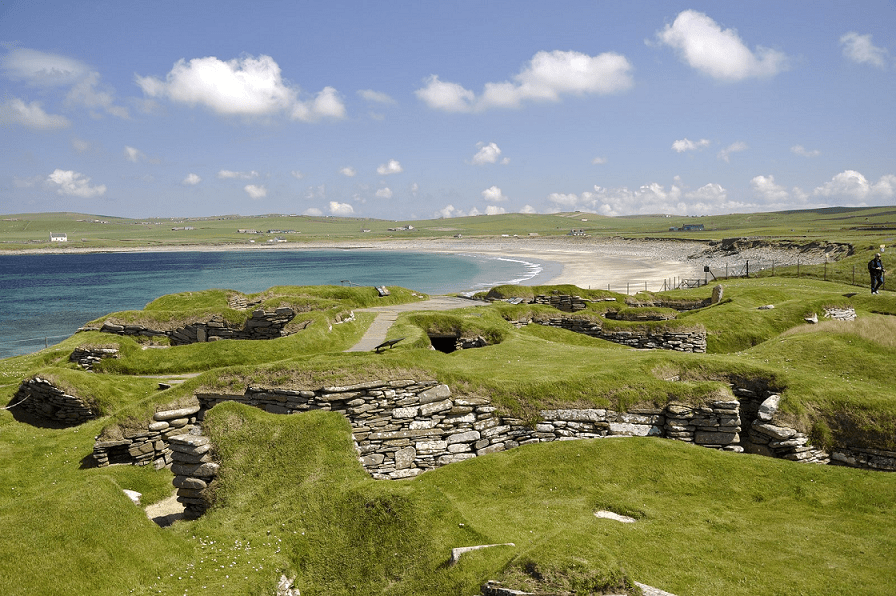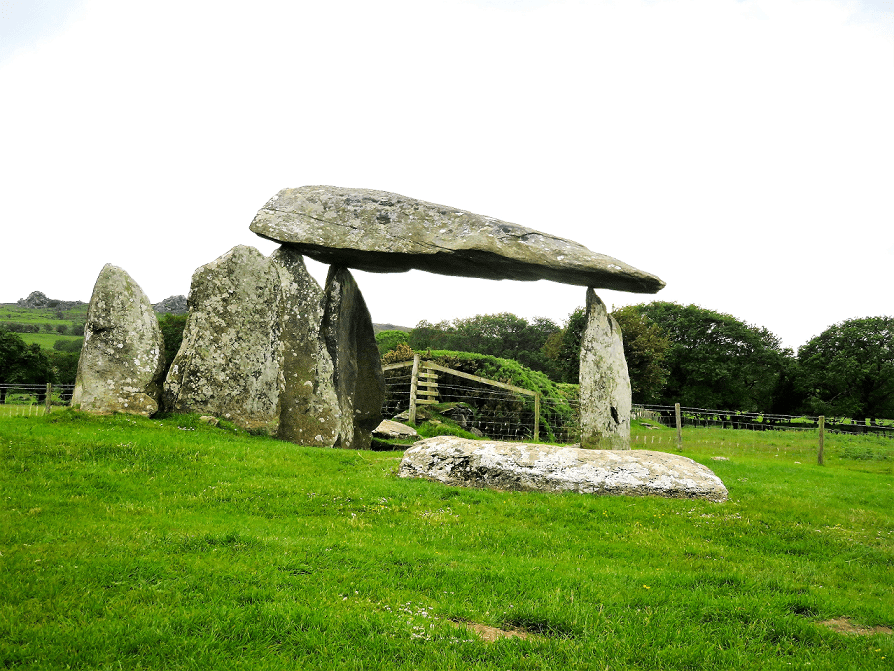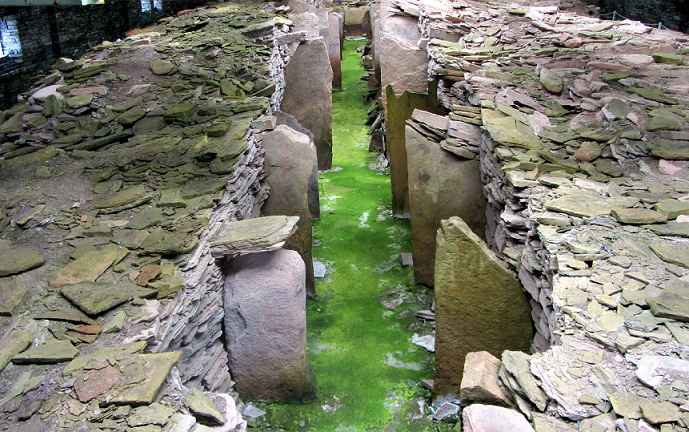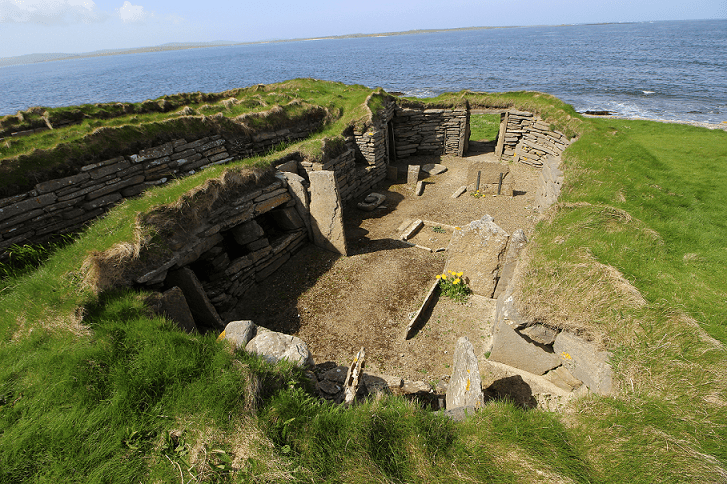From castles and cathedrals to churches and monasteries, the United Kingdom is home to some of the world’s oldest and most awe-inspiring buildings.
Among these is the Barnhouse Settlement in Mainland Orkney, Scotland, dating back to 2600 BCE, and Knap of Howar in Papa Westray, built in 3700 BCE.
Other notable buildings include the Belas Knap in Gloucestershire, built in 3000 BCE, Pentre Ifan in Pembrokeshire, which dates back to 3500 BCE, and West Kennet Long Barrow in Wiltshire, which was consecrated in 3650 BCE.
These ancient buildings have stood the test of time and are now living monuments to the rich history of the United Kingdom.
10. Barnhouse Settlement
Date Built: 2600 BCE
Location: Stenness, Mainland Orkney, Scotland
Coordinates: 58.9965° N, 3.1881° W
Purpose: Ceremonial site
photo source: Wikimedia Commons
The Barnhouse Settlement is a Neolithic village in Stenness on the Orkney Mainland of Scotland. A small group of people originally inhabited it, and the settlement features several small, round houses with turf cladding surrounding the outer walls.
The settlement is home to the largest single house, House 2, which is double-sized and features a higher building standard than the other houses.
The settlement also contains a central open area divided into areas for making pottery and the working of flint, bones, and hides. The Barnhouse Settlement is an important archaeological site and a reminder of the incredible history of the United Kingdom.
Did You Know?
The Barnhouse Settlement was discovered in 1984.
9. Maeshowe
Date Built: 2700 BC
Location: Stenness, Mainland Orkney, Scotland
Coordinates: 58.9965° N, 3.1881° W
Purpose: Neolithic chambered cairn
photo source: Wikimedia Commons
Maeshowe is a chambered cairn and passage grave located on Mainland Orkney, Scotland. It was built around 2700 BCE and is an excellent example of Neolithic craftsmanship. The tomb is entered by a low entrance passage that leads to a square chamber measuring 15 feet on each side.
The walls are constructed of carefully crafted flagstone slabs, and the chamber walls are covered with carvings, including runic inscriptions, made by Vikings who looted the site in the 12th century.
Did You Know?
Maeshowe is a large mound with a diameter of 115 feet and a height of 24 feet; surrounding it is a large ditch.
8. Belas Knap
Date Built: 3000 BCE
Location: Winchcombe, Gloucestershire, England, UK
Coordinates: 51.9276° N, 1.9708° W
Purpose: Successive burials
photo source: Wikimedia Commons via ian freeman
Belas Knap is an awe-inspiring Neolithic long barrow in Winchcombe, Gloucestershire, England. Built around 3000 BCE, Belas Knap Long Barrow was used for consecutive human burials for thousands of years, with Romano-British pottery found from excavations in 1863 and 1865.
Belas Knap is an outstanding example of a Cotswold-Severn group tomb and is an impressive, trapezoid-shaped monument.
Belas Knap features intricate dry-stone walling, limestone jambs, lintels, and four burial chambers, two at the middle and one at the North-East and South ends.
Visiting Belas Knap is a great way to learn about the UK’s history and experience the English countryside’s beauty.
Did You Know?
The barrow is about 178 feet long, about 60 feet wide, and nearly 14 feet in height.
7. Unstan Chambered Cairn
Date Built: 3400 to 2800 BCE
Location: Stenness, Mainland Orkney, Scotland
Coordinates: 58.9866° N, 3.2494° W
Purpose: Communal burial place
photo source: Wikimedia Commons
The Unstan Chambered Cairn is a Neolithic chambered cairn located in Stenness, Mainland Orkney, Scotland. Built around 3400 to 2800 BCE, Unstan is an atypical example of the Orkney-Cromarty chambered cairn, as it contains a side chamber, and the main chamber does not open at the end of the passageway, like typical stalled tombs.
The tomb is a particularly well-preserved and somewhat unusual example of an Orkney–Cromarty chambered cairn, with a central passageway flanked by a series of paired transverse stones that separate the side spaces into compartments.
Did You Know?
Evidence from nearby tombs suggests it was in use well into the second millennium BC, as an arrowhead was discovered in the tomb that is characteristic of the Beaker People.
6. Skara Brae
Date Built: 3100 BCE
Location: Bay of Skaill, Mainland Orkney, Scotland
Coordinates: 59.0488° N, 3.3417° W
Purpose: Support walls for Neolithic settlements
photo source: Skara Brae by Stuart Wilding
Skara Brae is a remarkable Neolithic settlement located on the Bay of Skaill on the west coast of Mainland, the largest island in the Orkney archipelago of Scotland. Built around 3100 BCE, the site consists of ten clustered houses, made of flagstones, in earthen dams that provided support for the walls.
The houses include stone hearths, beds, cupboards, and a primitive sewer system with toilets and drains in each house. It offers one of the earliest known records of the human flea, and the Grooved Ware People who built it were primarily pastoralists who raised cattle and sheep.
Did You Know?
Skara Brae is Europe’s most complete Neolithic village and is older than Stonehenge and the Great Pyramids of Giza, leading to its nickname of the “Scottish Pompeii”.
5. Tomb of the Eagles
Date Built: 3150 BCE
Location: South Ronaldsay, Orkney, Scotland
Coordinates: 58.7391° N, 2.9314° W
Purpose: Burial tomb
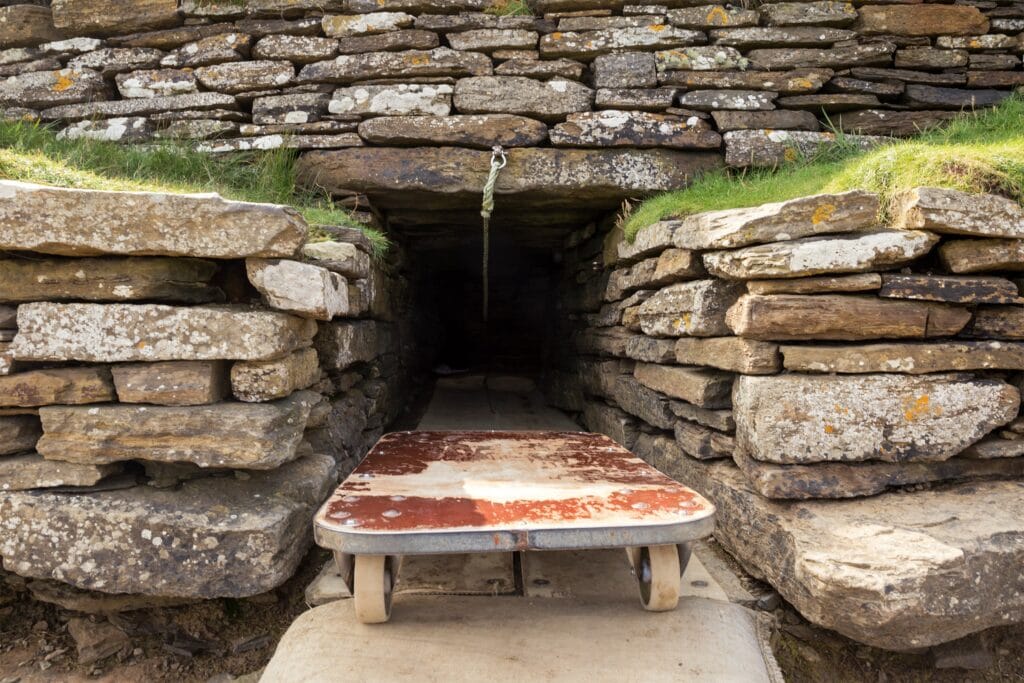
The Tomb of the Eagles, or Isbister Chambered Cairn, is an impressive Neolithic chambered tomb located on a cliff edge at Isbister on South Ronaldsay in Orkney, Scotland. Built around 3150 BCE, the tomb was discovered by farmer Ronald Simison in 1958 and was later excavated in 1976.
Approximately 16,000 human bones have been found from at least 324 individuals and talons and bones from eight to 20 birds. Radiocarbon dating suggests that the construction may have taken a full century and suggests that the tomb was in use for 800 years.
Visiting the Tomb of the Eagles is a great way to learn about the history of the UK and experience the beauty of the Scottish countryside.
Did You Know?
Visitors used to be able to access the tomb via a low tunnel, however, due to COVID-19 regulations, it is now closed to the public.
4. Pentre Ifan
Date Built: 3500 BCE
Location: Nanhyfer, Pembrokeshire, Wales
Coordinates: 51.9990°N 4.7700°W
Purpose: Burial chamber
photo source: Wikimedia Commons
Pentre Ifan is an impressive Neolithic dolmen in Nanhyfer in Pembrokeshire, Wales. Built around 3500 BCE, the monument consists of seven giant stones placed on the site by the ancient peoples of the area.
It stands on a foothill slope of the Preseli hills with wonderful views and is oriented north-south.
Archaeological excavations have identified rows of ritual pits which lay under the mound and kerbstones for the mound, suggesting it was built as a communal burial site. The site is well kept, entrance is free, and it is maintained and cared for by Cadw, the Welsh Historic Monuments Agency.
Visiting Pentre Ifan is a great way to learn about the UK’s history and experience the Welsh countryside’s beauty.
Did You Know?
Pentre Ifan was studied by early travelers and antiquarians and quickly became famous as an image of ancient Wales.
3. Midhowe Chambered Cairn
Date Built: 3500 BCE
Location: Rousay, Orkney, Scotland
Coordinates: 59.1565° N, 3.0991° W
Purpose: Communal burial chamber
photo source: Wikimedia Commons
Midhowe Chambered Cairn is a large Neolithic chambered cairn located on the south shore of the island of Rousay, Orkney, Scotland. Built around 3500 BCE, the tomb was discovered in 1932 by the landowner and is the largest cairn on Orkney at over 75 feet long.
A modern hangar protects the tomb from the elements and is composed of a central passageway flanked by a series of paired transverse stones that separate the side spaces into 12 compartments.
The cairn appears to have been intentionally filled with debris after hundreds of years of usage, and the remains of at least 25 individuals were discovered in the tomb. Bones from various animals, including ox, sheep, skua, cormorant, buzzard, eagle, gannet, and carrion-crow, were also found.
Did You Know?
The tomb is protected by an oval barrow and a forecourt which may have been used for ceremonies.
2. West Kennet Long Barrow
Date Built: 3650 BCE
Location: Wiltshire, England
Coordinates: 51.4086° N, 1.8511° W
Purpose: Burial chamber
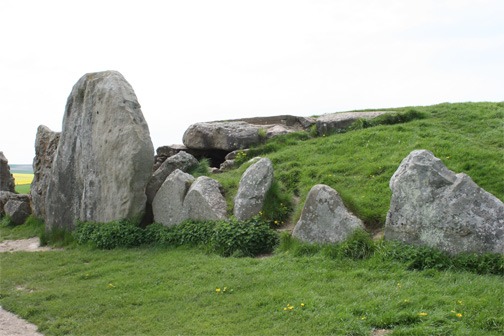
The West Kennet Long Barrow is a remarkable ancient monument near Avebury village in Wiltshire, England.
Dating back to 3650 BCE, this Neolithic burial chamber is Britain’s largest and best-preserved of its kind. The site was built with local sarsen stones, some of which still stand more than three meters tall.
The West Kennet Long Barrow consists of a long mound surrounded by a large circular ditch and bank. Inside the mound are five separate chambers, each containing multiple burial sites. Archaeological excavations have revealed evidence of human remains and grave goods such as pottery and flint tools.
Did You Know?
Today, the West Kennet Long Barrow is a Grade I listed monument and a Scheduled Ancient Monument. It is open to the public and provides an opportunity to explore and experience the incredible history of this unique site.
1. Knap of Howar
Date Built: 3700 BCE
Location: Papa Westray, Orkney, Scotland
Coordinates: 59.3495° N, 2.9106° W
Purpose: Home of a Neolithic Orcadian family
photo source: Wikimedia Commons
The Knap of Howar is an incredible Neolithic site located on the island of Papa Westray in Orkney, Scotland, and is considered the oldest building in the UK.
It was built around 3700 BCE and is believed to be one of the oldest dwellings in Europe. The site consists of two large buildings made from local stone, with walls up to a meter thick and roofed with turf.
Outside the buildings are several stone circles and middens (piles of shells discarded by the inhabitants). These indicate that the occupants of the Knap of Howar were able to supplement their diet with seafood and grow crops such as barley and oats. This is further evidenced by the presence of querns (stone tools used for grinding grain) found at the site.
Did You Know?
The Knap of Howar is an incredibly important archaeological site, providing insight into the lives of early European settlers.


